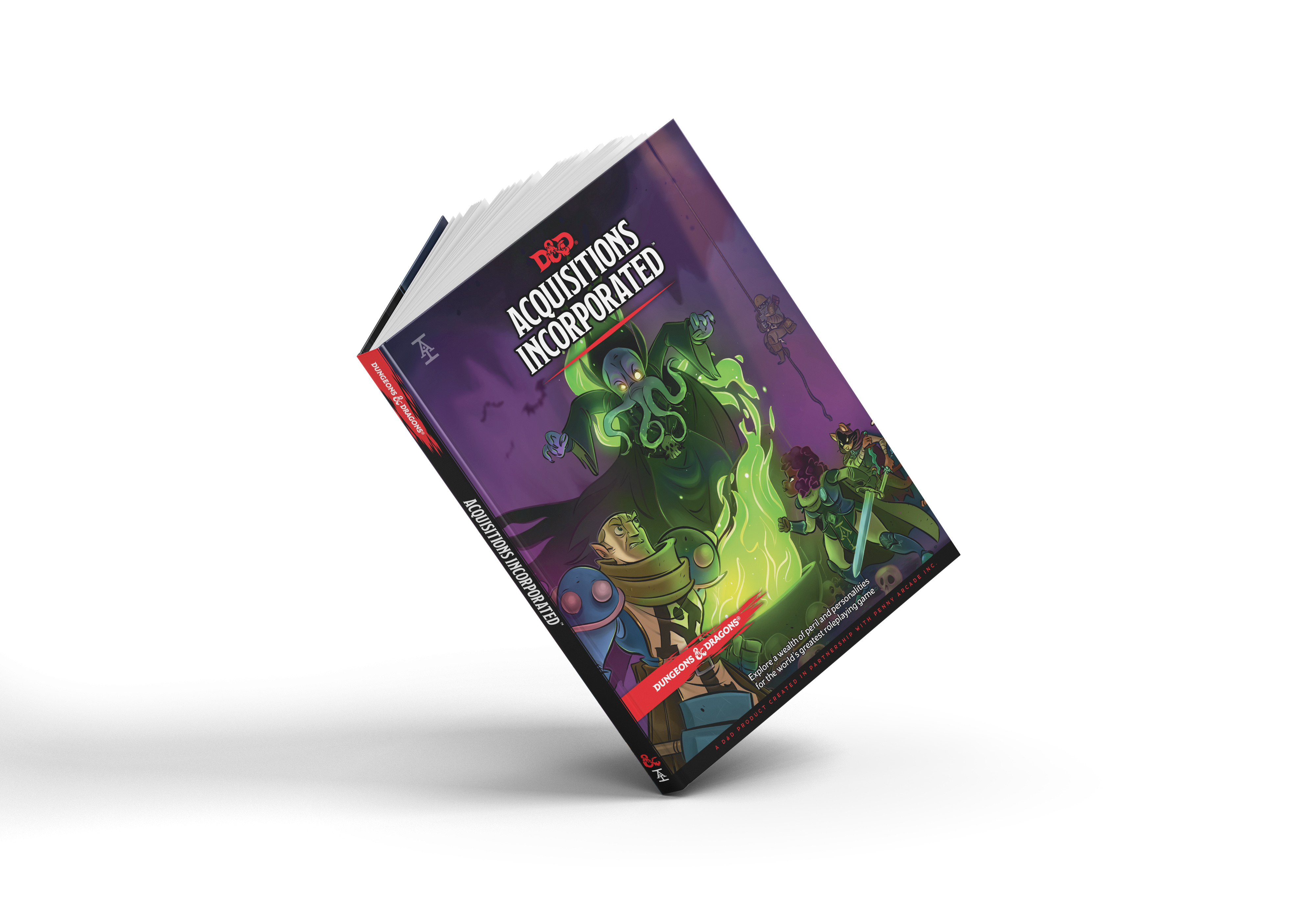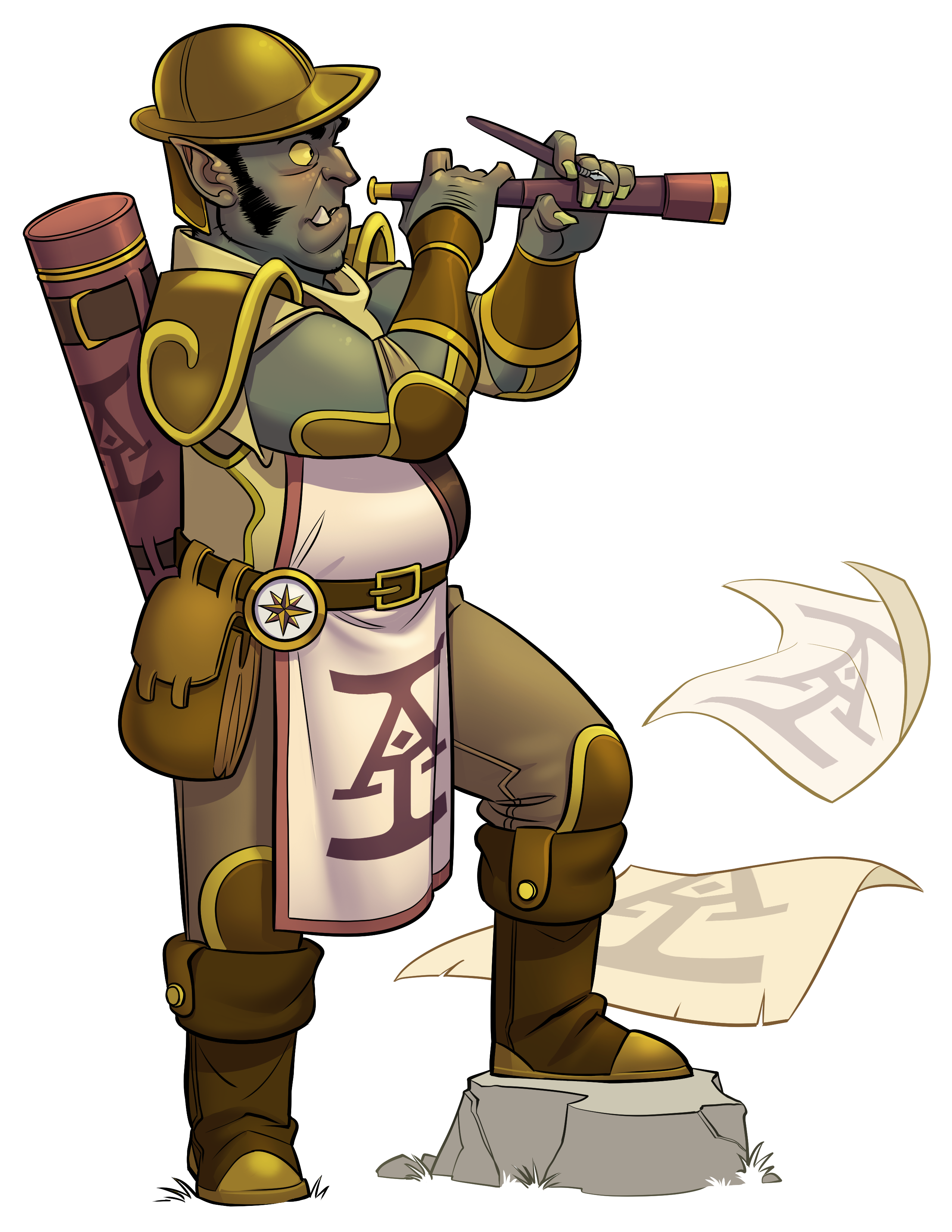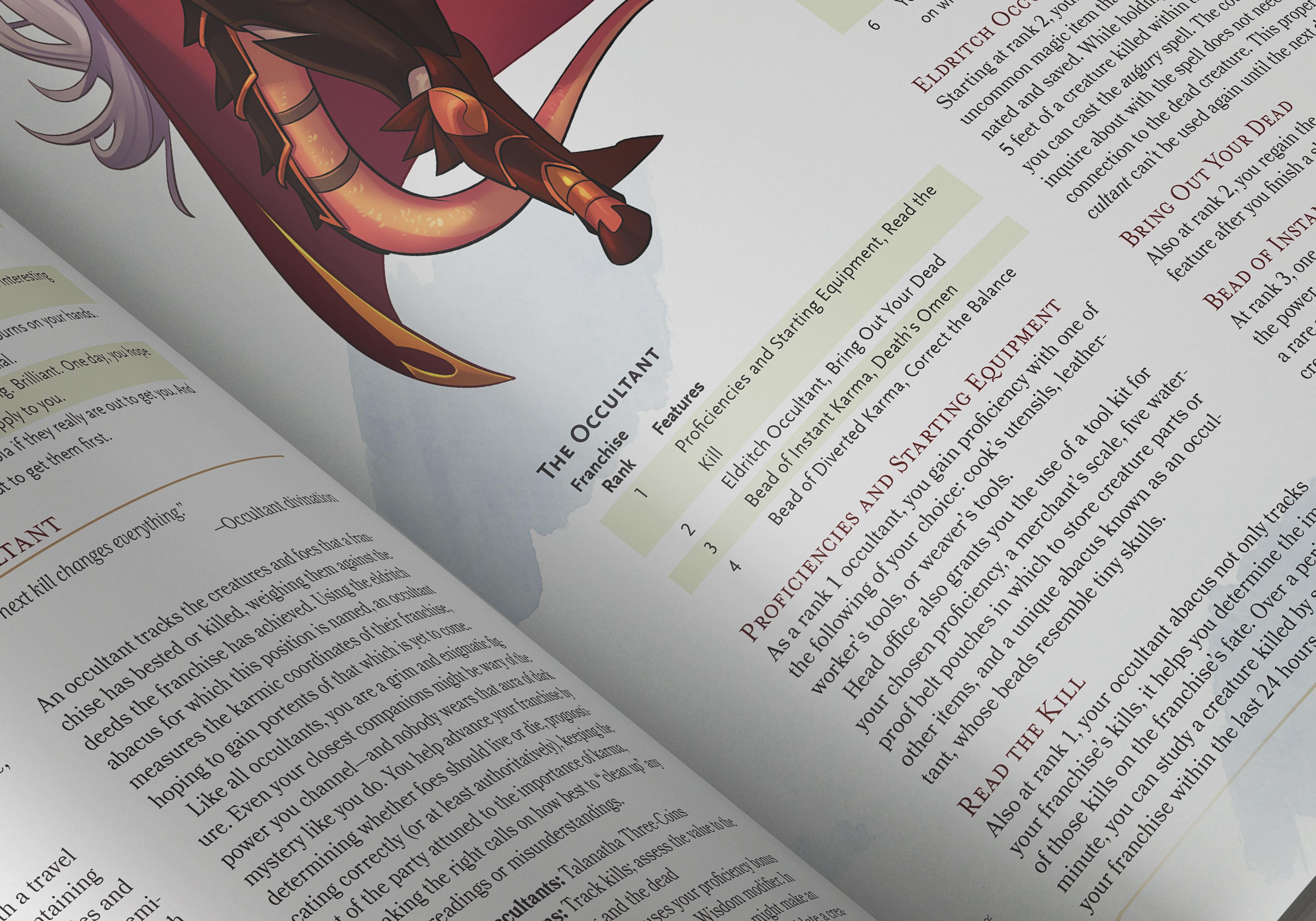Penny Arcade’s Tycho Dispenses Dungeons & Dragons Tips
Inject some demonic energy into your game

SEATTLE – Sometimes, Dungeons & Dragons is an epic tale of stalwart heroes, standing together to save the world from unspeakable evil. And other times, it’s the misadventures of a bunch of high-fantasy middle-managers, desperately trying to please their demonic corporate overlords. If you’re a fan of Penny Arcade’s long-running D&D liveplay series, Acquisitions Incorporated, you can now employ the characters and setting in your very own tabletop games, courtesy of an official Wizards of the Coast-approved expansion.
At PAX West, I sat down with Jerry Holkins, aka Tycho, co-founder of Penny Arcade, and Elyssa Grant, senior producer and manager on Penny Arcade’s business side. The three of us proceeded to talk about D&D in general, the Acquisitions Incorporated rulebook specifically and how there’s room for a little chaos at every RPG table.
For those who aren’t familiar with Acquisitions Incorporated, it’s a Dungeons & Dragons podcast (sometimes with video) that stars Tycho, Mike Krahulik, aka Penny Arcade’s Gabe and fellow cartoonist Scott Kurtz. The series has been going, on and off, for more than 10 years, and some big names in Dungeons & Dragons have taken turns acting as Dungeon Masters. Back in June, an official Acquisitions Incorporated sourcebook came out, published as a collaboration between Penny Arcade and Wizards of the Coast.
“Acquisitions Incorporated is a dark office comedy in a fantasy context. It has a lot of dynamics that you would see in a show like The Office, but the stakes are very different,” said Holkins. “There’s sort of an unaccountable boss-type figure. Everyone else is trying the best they can with very limited resources. Except that in The Office, death is not omnipresent. Weirdly enough, it actually only accentuates the humor. You’d think it wouldn’t work that way.”
“A tone was established years ago, and whenever we work on anything that’s Acquisitions Incorporated-related, that tone can be captured through a couple of lines of text,” Grant added. “We’ve come to know and live exactly what Acquisitions Incorporated is.”

Inviting new players
Holkins is especially proud of how the Acquisitions Incorporated sourcebook lets characters work together and advance over time without just offering XP rewards. In addition to their classes (the standard Fighter, Rogue, Wizard and so forth), each player takes on a role as a specific type of corporate office drone. How they advance as a worker is not directly related to how they advance as an archetype.
“When you look inside the book, you can tell right away that things are distinct,” he said. “Different people have different jobs that can complement each other. We enunciate eight different roles that are not classes, and are not just skills. They’re a set of abilities that you unlock, and they level up independently from your character.”
Sign up to get the BEST of Tom's Guide direct to your inbox.
Get instant access to breaking news, the hottest reviews, great deals and helpful tips.
Both Holkins and Grant also believe that Acquisitions Incorporated might be a good place for newer D&D players to start. In addition to detailing a comprehensive setting (and including a complete adventure for low-level adventurers), the handbook reads conversationally, and guides both players and DMs along every step of the way.
“The tone of the book talks right to the player. It’s a very casual tone,” said Grant. “If a player is reading it, or a DM is reading it, it makes them feel like they’re speaking to the writer.”
“When you get to the back half [of the book], the breakout boxes give you suggestions and guide you along,” Holkins added. “It thinks about D&D adventures in a different way. It definitely invites the DM to consider a few possibilities that branch off of it in a conversational way. IN general, I would say it’s a very friendly, more personal, intimate tone throughout the book.”
Of course, it helps that there’s more than 10 years of Acquisitions Incorporated lore to draw upon. New players may very well feel more comfortable with a setting that’s been exquisitely detailed and lived-in, rather than a world of the DM’s invention where anything can happen. In fact, Holkins argued, a little restriction can be a great thing for creativity.

The spirit of collaboration
“D&D is a vast game. The conceptual space is very big, and it can be nice to have a job as a metaphor,” Holkins said. “In a game where you can literally do anything, it can be very paralyzing. Having a specific responsibility in your franchise helps a lot of people.”
“These positions allow for people to understand the training wheels of what it’s like to be a DM,” said Grant. “It’s almost a guide to becoming a DM by introducing responsibilities.”
I asked the two to expand on these answers. Newer gamers might find this hard to believe, but D&D as a completely collaborative storytelling experience is a relatively new idea. In older editions of the game, the DM was responsible for almost every piece of background information in the game, and the players had an almost completely reactive role. These days, it’s much more common for players and DMs to collaborate on setting scenes, advancing subplots and even designing big pieces of a world’s history.
“That [collaboration] comes from indie RPGs,” said Holkins. “The whole purpose of games like Tales from the Loop – that’s the hook underneath it. Players can set scenes.”
“You’re making a movie together,” said Grant.
“Player scan say where they are,” Holkins continued. “You don’t just travel from scene to scene to scene. Any player can establish a scene, and bring certain people along with them. It’s definitely a new thing.”

Balancing the game – or not
Holkins and Grant emphasized the fact that Wizards of the Coast combed through the Acquisitions Incorporated sourcebook meticulously, in order to ensure mechanical compatibility with the rest of D&D.
“It’s an official D&D book,” Holkins explained. “It’s designed to be a peripheral for what is generally called the Holy Trilogy: the Player’s Handbook, Monster Manual and Dungeon Master’s Guide.”
“You can be in Avernus, you can be in the Underdark, you can be wherever you are, and this content can still apply,” said Grant.
At the same time, Holkins doesn’t want anyone to feel constrained by these rules. Making an official D&D book is one thing, he said. But at individual tables, it’s more important to play in a way that ensures everyone has fun. Acquisitions Incorporated is there to inspire players; not shackle them to another set of rules.
“Every table has its own version of D&D,” said Holkins. “At an individual table level, I think it’s OK to upset the balance. At your table, as long as everyone agrees, as long as everyone’s having fun, it’s your game. You can do whatever you want to. Remember that.”
To finish things off, I asked if Holkins had a special trick to running a long, compelling campaign, especially for new DMs who may want to use Acquisitions Incorporated as a springboard for their own adventures.
“Always have a thread in your back pocket for characters,” he advised. “Different players need different things from the game. Different players play D&D for different reasons. After you’ve been playing with a group for a while, you’ll understand what those things are.
“A lot of new people are playing the game now, and there are not a lot of guiderails for that. You can do anything you want to. You shouldn’t, probably, but you can. It can be pretty intimidating for new players. In my experience, as long as you have a good sense of what the charater wants, you can put it in front of them at different times and bring them back in.”
And if what your character wants is to be the best damn office drone for a hellish MLM firm, so much the better.
Be sure to follow our Pax West 2019 hub for the latest news and impressions out of Seattle.
Marshall Honorof is a senior editor for Tom's Guide, overseeing the site's coverage of gaming hardware and software. He comes from a science writing background, having studied paleomammalogy, biological anthropology, and the history of science and technology. After hours, you can find him practicing taekwondo or doing deep dives on classic sci-fi.

